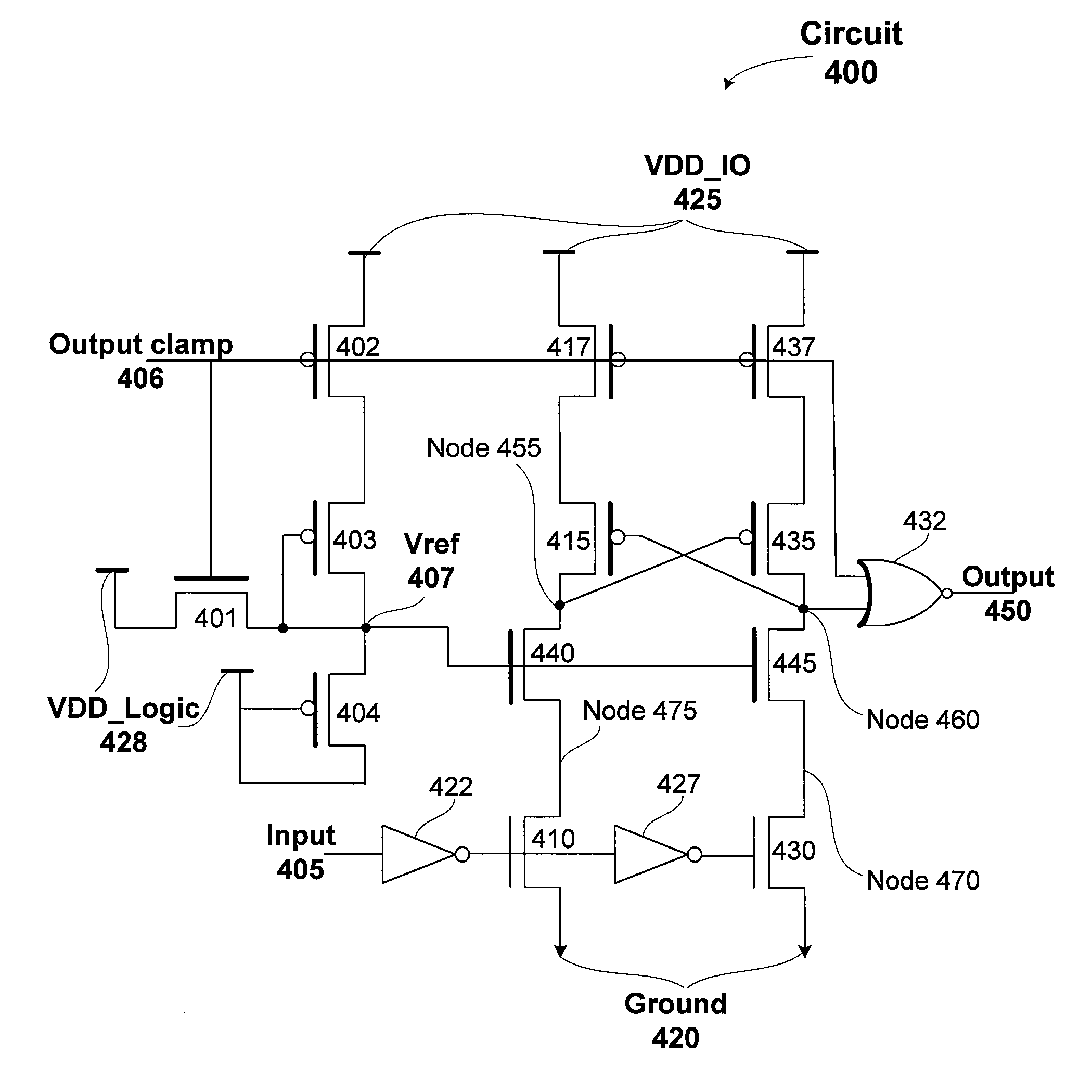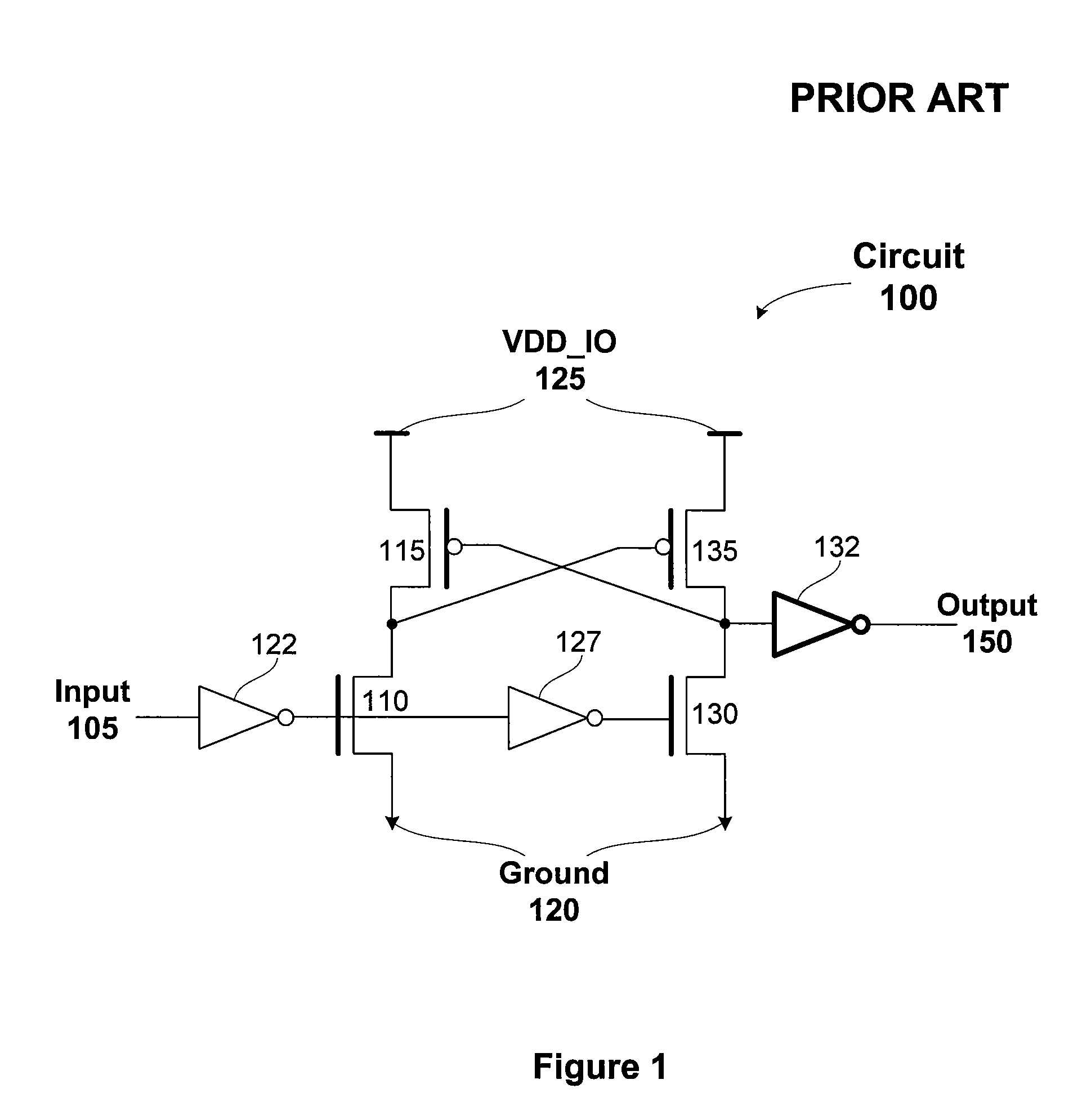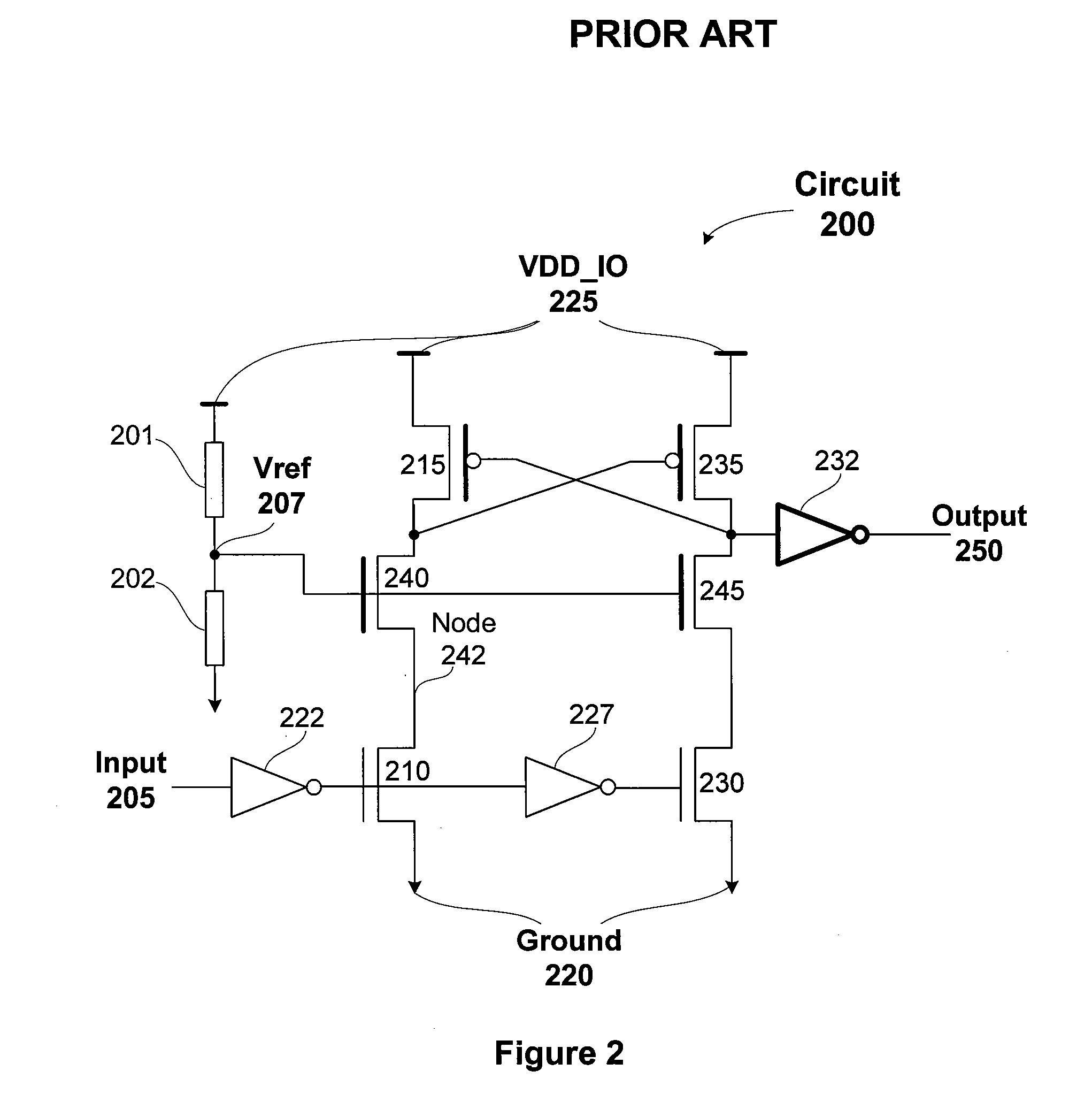Level shifter circuit to shift signals from a logic voltage to an input/output voltage
- Summary
- Abstract
- Description
- Claims
- Application Information
AI Technical Summary
Benefits of technology
Problems solved by technology
Method used
Image
Examples
Embodiment Construction
[0027]In the following description, numerous specific details are set forth to provide a more thorough understanding of the present invention. However, it will be apparent to one of skill in the art that the present invention may be practiced without one or more of these specific details. In other instances, well-known features have not been described in order to avoid obscuring the present invention.
[0028]FIG. 3 is a block diagram illustrating a device 300 that includes a voltage level shifter 320 configured to implement one or more aspects of the present invention. Logic circuits 330 is within a low voltage domain 324 and operates at a VDD_logic voltage level that is lower than the VDD_IO voltage level used by I / O circuits 315. I / O circuits 315 is within a high voltage domain 322 and may include pads and other I / O specific circuits that operate at the VDD_IO voltage to send and receive signals from other devices in a system that also operate at the VDD_IO voltage. Output signals 3...
PUM
 Login to View More
Login to View More Abstract
Description
Claims
Application Information
 Login to View More
Login to View More - R&D
- Intellectual Property
- Life Sciences
- Materials
- Tech Scout
- Unparalleled Data Quality
- Higher Quality Content
- 60% Fewer Hallucinations
Browse by: Latest US Patents, China's latest patents, Technical Efficacy Thesaurus, Application Domain, Technology Topic, Popular Technical Reports.
© 2025 PatSnap. All rights reserved.Legal|Privacy policy|Modern Slavery Act Transparency Statement|Sitemap|About US| Contact US: help@patsnap.com



